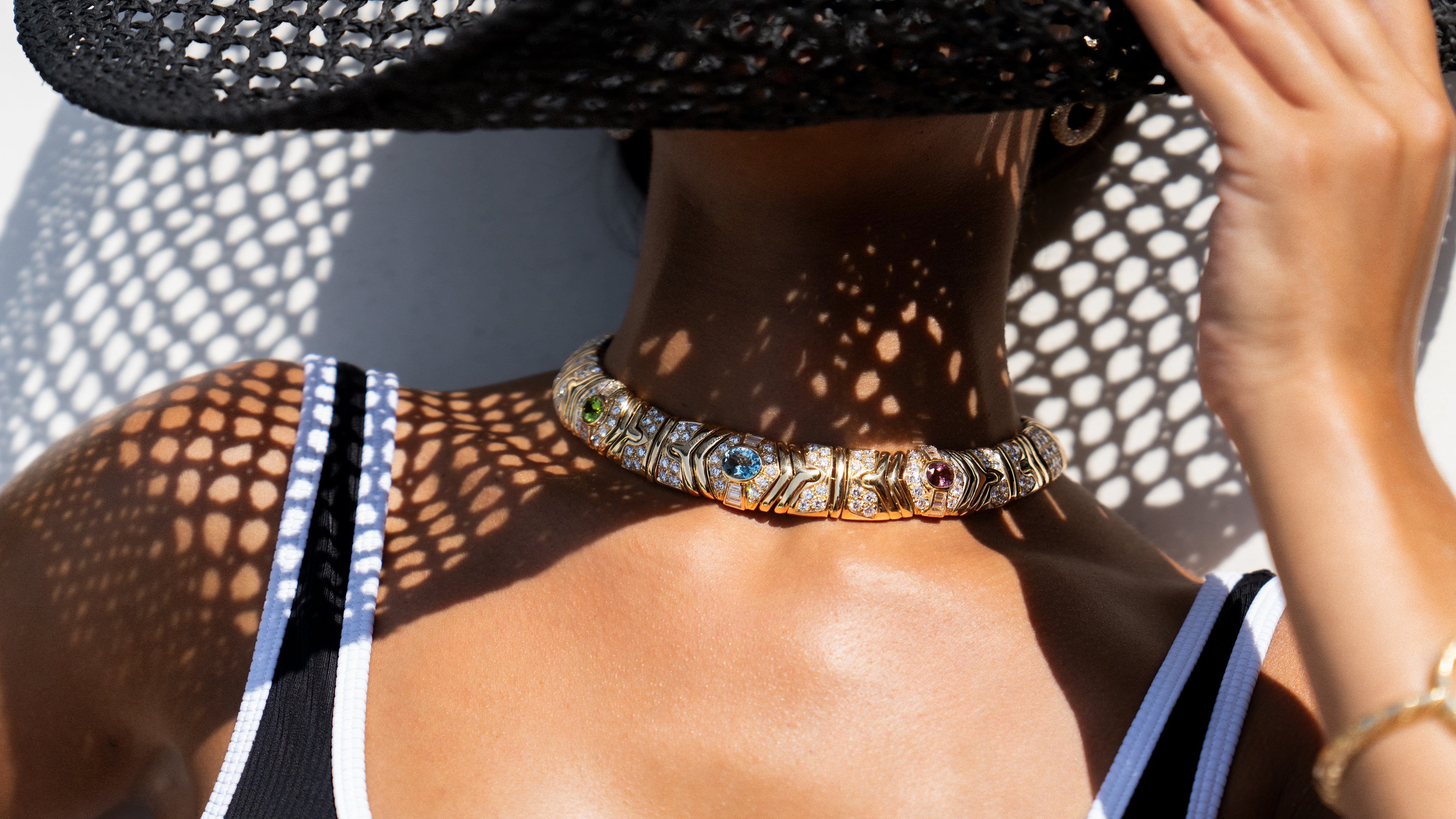The House of Kutchinsky
From modest beginnings in the East End of London to a Post-World War II jewelry powerhouse that became internationally renowned, the story of Kutchinsky is vibrant and colorful.
Polish Roots
Hirsch Kutchinsky landed on the shores of England with his family in tow and established a jewelry firm in 1893. The family brought with them many years of jewelry making experience, most notably as jewelers to the court of Ludwig of Bavaria. Hirsch and his son, Morris, hastened to set up their own jewelry manufacturing company in London’s East End to continue the family business. They quickly garnered a reputation for their high-quality jewels, designed using platinum and diamonds, and reflecting the current motifs of the era.
The Family Business Grows
In 1928, Hirsch’s son Joseph joined the firm his father and grandfather had built. Joseph was only 14, but already he was a skilled diamond cutter. Joseph had a real knack for the business, learning all aspects, including the importance of quality craftsmanship and incomparable customer service. In no time at all, he was in charge of the firm’s production of platinum and diamond watches. His natural sales ability, charismatic charm, and seemingly inexhaustible persona ensured the company’s continued success.
Joseph Kutchinsky wed in 1940, right before he left to fight in the Second World War. Once he’d served his country, he returned and settled in to lead his family’s firm.
Many of Kutchinsky’s creations during the late 1940s and 1950s were bold and intentionally ostentatious, celebrating the end of wartime restrictions and the ability to once again have access to luxury items. Rings, bangles, brooches, and earrings were awash in round, marquise and baguette diamonds, beautifully colored with gemstones and natural materials such as coral or turquoise. During this time, Kutchinsky was renowned for playful designs that included birds, cats, and other animals, fashioned in 18K yellow gold, often with enamel accents. In fact, the firm produced a whole host of playful creatures during these years.
Moving the Business
In 1958, seeing the decline of London’s East End, Joseph relocated the business to a neighborhood better suited to grow the business. So it was that Kutchinsky moved to Brompton Road in Knightsbridge in West London. There they found renewed success, designing and producing jewelry that reflected current trends, set in gold or platinum, with diamonds and precious gems.
The Next Generation
Once their education was complete, Joseph took on his two sons, Roger and Paul, and the family business continued to thrive. London’s finest clientele, as well as customers from as far away as the Middle East, sought out the designs created by the House of Kutchinsky.
The Middle East proved particularly lucrative, until the invasion of Kuwait and the war that followed. Faced with devastating financial losses, Kutchinsky decided in 1991 to sell their business to Moussaieff Jewellers Ltd., a rival London jeweler.
Kutchinsky Style
In the early years, the House produced beautiful, high-quality fashions that mirrored the times. The big breakthrough for Kutchinsky came after World War II, with the creation of the whimsical, colorful, sometimes comical designs produced under the watchful eye of Joseph Kutchinsky. It is these pieces that remain the most collectible to this day, frequently being heralded as miniature works of art that beautifully reflect the time in which they were created. One of the talents for which Kutchinsky was well known was their stone cutting technique.
Notables
- One of the fanciful critters designed in the 1970s, Kutchinsky crafted a brooch depicting a winking cat, fashioned in 18K yellow gold. His belly held a large cabochon garnet, his open eye a blue cabochon sapphire. A ruby decorated the tip of his nose. The cat had a “stiff upper lip” British feel about it, exuding a distinct personality that is characteristic of many of the Kutchinsky’s animal-themed pieces created during this time.
- Kutchinsky produced a series of bold rings in oblong shapes, fashioned in textured 18K gold and pavé set with diamonds, as well as tiger’s eye, coral, and lapis lazuli.
- In the 1960s, Kutchinsky created a series of rope-twist curb-links with matching clasps. The bracelets were fashioned in 18K yellow gold and celebrated for the quality and intricacy of their craftsmanship.
- A diamond cocktail ring, created in the 1960s, purportedly inspired by the advent of space travel, was assuredly an eye-catching addition to any wardrobe. The large ring with a nugget-like finish hosted a series of diamond-filled “craters” that created a stunning effect.
